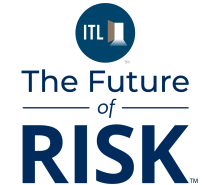The financial services sector currently accounts for about 10% of all deals and is experiencing positive momentum. Throughout 2023, the industry has maintained a consistent level of deal activity and has demonstrated year-over-year growth in both deal value and deal count. There is still a pressing need for organizations to improve their divestiture processes – in both selection and execution.
See also: 3 Key Workplace Challenges Reshaping Business
Complexities of Divesting Entangled Entities
When looking at a business through the lens of a divestiture, an asset can often be thought of in one of two ways: Either it is largely independent from the parent company, or it is dependent on infrastructure owned by the parent. The latter scenario, commonly referred to as "entangled," presents additional complexities regarding how to effectively separate during a divestiture.
"Entangled" is an umbrella term that can describe many relationships between the parent and the division being sold. These two parties might be connected by the labor they employ or by the infrastructure they use. The entanglements that are easiest to manage are relationships with third parties where the master agreement sits with the parent company but the purchase orders or statements of work specific to the entity being divested are straightforward. On the other end, time-intensive and difficult-to-manage entities are tethered to their parent companies by IT applications and infrastructure. In these cases, program management resources that can coordinate between different functions and subject matter experts within each function are crucial.
The degree of entanglement also affects compliance considerations that must be made when selling an asset that has previously been dependent on the parent company. These considerations will hinge on the size of the deal and the degree to which the industry in question is regulated. For insurance specifically, parent companies need to inform numerous regulatory organizations at both federal and state levels, while also completing an approval process for some aspects of the divestiture. Regardless of the industry of the seller, the parent company also must be compliant with employment laws when managing workforce reductions or as employees are moved to the new owner.
Practical Considerations
- Planning for the known and the unknown
It is important to establish a structure through which the divestiture will be managed. This management structure can include things like a governance hierarchy, a suggested schedule for when different groups should meet, the responsibilities of different required roles and a framework for making critical decisions. It is also important to ensure this management structure is flexible. The proper governance and meeting cadence that exists six months from the close of the transaction may no longer be appropriate when launch is only one month away. Having this flexibility will allow for the divestiture to maintain momentum throughout the process while also being able to respond to unforeseen complexities.
An effective way to facilitate this flexibility is to employ a program management team. The team will serve as the glue that holds things together, connecting different stakeholders with each other at the appropriate times and planning ahead for critical milestones. This team works within parameters of the governance structure to ensure quality, timelines and efficient decision-making. As the needs of the divestiture change, the program management team will adapt accordingly and keep the plan current. It is important for this team to communicate clearly and to keep the broader team motivated during periods of intense work.
- Establishing effective communication
A divestiture represents a time of uncertainty for employees of the company. When a deal is newly announced, employees will question the longevity of their jobs. How a company communicates with its employees during this stressful period will greatly affect employees' trust and engagement. As a successful divestiture is contingent on retaining key talent and continued engagement, communication to assuage employees' fears will go a long way to stabilize the situation and enable the success of the new organization.
There are different ways a company can effectively communicate with its employees. First, a central communications team should be established to own, develop and manage all communication activities and messaging. Key communication milestones such as deal announcements and employee town halls should be set and prepared in advance. Employee messaging should be as transparent and factual as possible and foresee questions that employees may have at the top of their minds. Less formal communication activities may also be deployed – such as smaller meetings hosted by department heads – however, it is important to ensure that the messaging delivered across all these meetings is consistent and vetted by the central communications team.
See also: How Business Rules Engines Can Slash Time to Market
- Retaining critical talent to limit business disruptions
Successful separations are predicated on retaining critical talent and staffing key roles with the right personnel. Separations signal times of change and uncertainty for personnel for various reasons, such as cultural misalignment with the acquiring company, changes in leadership and disruption in ways of working (relocations, job function changes, etc.), which often result in a marked increase in attrition rates. High turnover at the outset can affect company operations directly and indirectly – by demoralizing and placing extra burden on remaining employees.
There are, however, ways to limit talent disruption and impact on business operations. One way is the creation of a talent retention program, in which critical personnel are identified in advance and offered incentives to stay with the company. Incentives can be monetary (stock options, bonuses) and non-monetary (developmental opportunities). Incentives can also be set up to align with transition timing as the impact of the divestitures may sometimes be felt for years down the line. Encouraging employee engagement during the transition is another effective way to improve employee satisfaction, which reduces turnover and loss of productivity. Employees want to feel valued and heard in company matters, and engaging employee feedback is one way to achieve that.
- Mitigating Stranded Costs
"Stranded cost" is a term commonly used to describe a component of the parent company organizational structure that was previously supporting the divested entity but did not transfer as part of the transaction. Stranded costs can come in the form of people, third-party contracts, IT infrastructure or any other piece of the overall cost structure. These costs differ from other costs incurred by the parent company in that they no longer generate any value. Because of the entangled nature of many divested entities, planning for stranded costs, or even the recognition that they exist, can often be overlooked. This is a misstep that can be mitigated, but it requires the identification of potential problem areas upfront.
As an example, IT is a function that is often difficult to unwind and so creates stranded costs. This is in part driven by the contractual landscape that supports an IT function, as day-to-day activities are typically driven by a consortium of third-party agreements that may include outsourced resource support and hardware and software licenses. These agreements are often not in sync with the timeline of the divestiture, so the parent company may be responsible for paying for goods or services that it no longer uses once the transaction is complete. Timely planning and communication with the respective vendors can help to amend contracts and minimize any residual obligations. This process takes a considerable amount of time and effort, and the involvement required also scales in relation to how entangled the entity is and how many agreements it has.
In sum, companies in the process of divestiture can approach unraveling entangled assets thoughtfully by putting some guardrails in place. Establishing a structure with teams appointed to manage programs and talent retention, ensuring proper timing for all changes and putting existing employees' morale first are some ways companies can retain value and support their business through a transformation.









